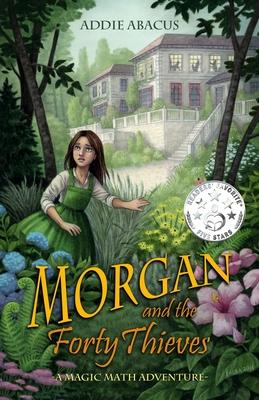Nine-year-old Morgan is the daughter of an explorer and an adventurer at heart. When her father is lost on an expedition, Morgan and her mother are forced to sell their home and move in with a mysterious family they've never met. Morgan soon discovers that the family is hiding a great secret-- and that a world of magic and enchantments might actually be real.
Set in Massachusetts at the turn of the last century, Morgan and the Forty Thieves is a captivating adventure story that has problem-solving and mathematical concepts woven into the narrative. Math is presented as a language of the universe that helps us understand the beautiful patterns and symmetries found in nature.
In Book One of the series, children learn a step-by-step process of beginning multiplication. It begins with skip counting or counting by numbers. It then moves to adding equal-sized groups, and then multiplication, with several examples of each worked into the story. There are also addition problems, logic puzzles, a pattern puzzle, a smattering of geometry and a simple demonstration of comparing numbers-depicting ratios without using that term. Finally, there is an introduction of two mathematical concepts found in nature, the Fibonacci sequence and Fractals. Math found in the natural world will be a repeated theme of the Morgan series.
The Morgan tales are designed as early Middle-Grade books. The sentence structure is simple and straightforward so that the book is accessible to younger readers, while the storyline is complex and intriguing enough to engage older readers. The Magic Math Adventure series is loosely based upon the collection of tales, The Thousand and One Nights or The Arabian Nights. These stories were created during the Golden Age of Islam in Persia and the Indian subcontinent.
